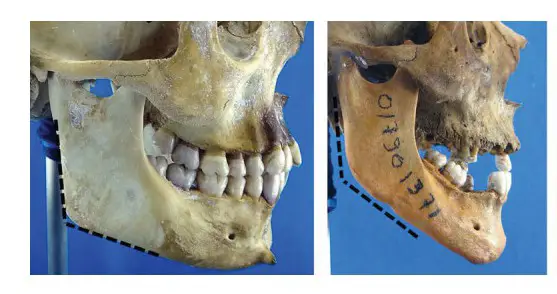
Hollow cheeks are a coveted look of the modeling industry. When you see a person with cheekbones, you immediately subconsciously assume they had proper nutrition, development and lived a healthy life. Studies show that prominent cheekbones indicate sexual maturity and trustworthiness.
You can get hollow cheeks by losing body fat, mewing, chewing hard foods, and proper swallowing. More invasive options for getting hollow cheeks include buccal fat pad reduction surgery or dermal fillers.
Consider one of our custom facial reports if you’re interested in an in-depth analysis of your cheekbone area and overall facial structure.
Anatomy
The cheekbones are a fusion of two bones, the maxilla, and zygomatic bones. Cheek hollows are essentially the space between the mandible and these cheekbones.

During normal craniofacial development, the jaw and cheekbones lose the baby fat that’s around them and grow larger. A cheek hollow is simply the space created between the mandible and zygomatic bone.
This is the buccal region of your face:
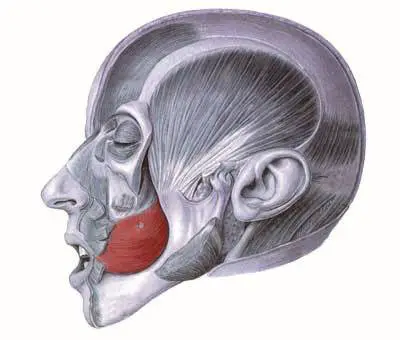
So, getting cheek hollows is a two-fold goal
1) Augment the zygomatic bone and mandible.
2) Find a way to diminish the buccal region.
Two maxillae bones and two zygomatic bones (cheekbones) compose the midface, or your upper jaw. The nasoorbitoethmoidal complex consists of all your sinuses. It shields your brain from the forces of chewing.
When the midface isn’t projecting forward, it’s called midfacial recession or sagittal maxillary deficiency. This leads to a lack of support for your eyes, where the inferior orbital rim (lower eye bone) is too low and you get a saggy eye area with dark bags. In a side profile view, the most forward part of the upper eye bone should be 2-3 mm in front of the lower eye bone.
Assuming relaxed eyelids and a forward gaze in a normal midface, the sclera of the eyes should not be visible below the irises. However, if the sclera is visible, that’s due to midface deficiency causing retrusion of the orbital rim (lower eye bone).
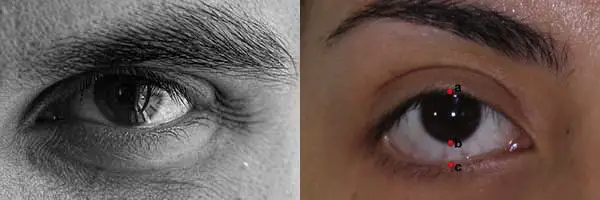
Take a wet cotton ball, squeeze it so that it’s 5-6 mm. thick and then place it under the upper lip. Then, if you think you look better from a side profile view, you might have midfacial recession and might benefit from maxillary advancement surgery.
The midfacial curvilinear contour line originates from the soft tissues above the zygomatic arch and:
- goes forward along the arch
- forward and towards the middle of the face to the sun-pupil region under the eye
- over the soft tissues of the cheek
- down to the region next to the nose
- backward and to the side leading to the side of the upper lip
- and then ends to the side of the oral commissure (corner of the mouth where the upper and lower lips meet).
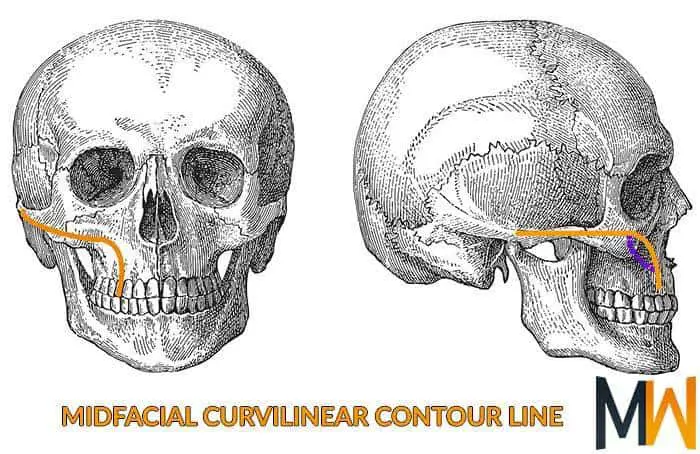
It is this line that is responsible for the appearance of prominent cheekbones and what is known as the ogee curve. Midfacial recession (seen above in purple) leads to a concave curvilinear contour line when it should be convex.
The cheeks are supported by the maxilla, malar bones, malar muscles, subcutaneous tissues, the malar fat bad and the buccal fat pad. The buccal fat pad is independent of the degree of overall body fat, though it does decrease with age. Depending on how thin it is, it can contribute to the hollowed cheeks look. Sometimes buccal fat pad removal achieves this look, but again, keep in mind that it also decreases with age, so you don’t want your surgeon to overdo removal of the buccal fat. As you age, the fat pad drops, increasing cheek volume on the outside of the jaw, leading to the appearance of jowling. Also, the midfacial fat will atrophy, the midfacial soft tissues will drop, and your cheeks will have a concave look similar to jowling anyway, which is a normal part of the aging process.
Facial Width To Height Ratio (FWHR)
One of the best indicators of facial attractiveness is the facial width to height ratio (FWHR). Measure the width of your face by the widest part near zygomatic bones (bizygomatic width) and divide it by your facial height from your lip and brow. The higher this ratio is, the more people perceive you as dominant and aggressive.
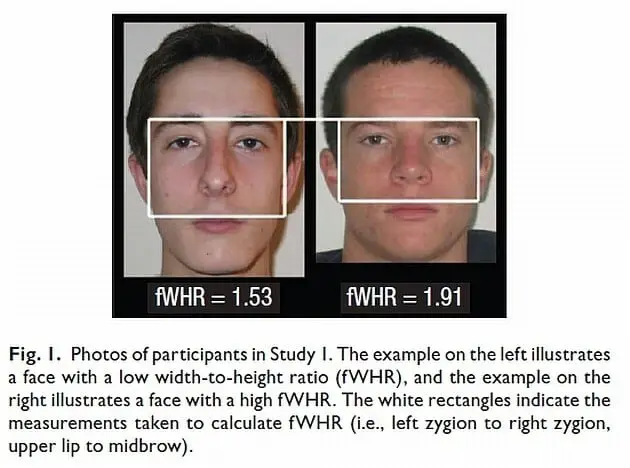
There have been several studies done on FWHR. The significance of the FWHR is that it is correlated with the following qualities:
– Being perceived as dominant and fearless.
– Being perceived as more aggressive.
– Less likely to die from physical violence.
– More financially successful.
– Better at team sports.
– More psychopathic.
– Being more willing to cheat.
– More willing to exploit/deceive people.
– Having more success with women for casual short term relationships.
– Better chances of fathering children & reproducing.
If you’re a guy, the last two qualities tell us pretty much all we need to know, and that a higher FWHR is ideal. The best FWHR is between 1.8 and 2. Too low and you’re perceived as weak due to your long face. Conversely, too high and you look weird, but you’d still look better than if you were too low. A high FWHR is also attractive on women because it looks youthful.
Getting bigger cheekbones will increase your FWHR.
Body Fat
The most important thing to do before doing anything else is to lose body fat. It’s almost too obvious, and as a result, most people underestimate this. Most guys think they have to bulk up. Also, losing weight is difficult. Most people with normal metabolisms are not going to enjoy cutting calories. This is more true the older you get and the more your metabolism slows down. This is why you don’t usually see people running around with model-looking cheekbones.
Don’t base too much of your weight loss around BMI or body fat percentage. Body fat percentage can be worthless as a metric depending on how much muscle you have. A guy at 10% body fat can either look freaking jacked or scrawny depending on how much muscle he has.
So, what I suggest to do is to lose weight until you get a 6 pack. Then lose another 5-10 pounds. This is the range where many models are walking around at, and you should have some semblance of cheekbones. If not, keep reading.
Mewing
Before you start to work on your cheekbones, you have to realize that bones are not static. Everyone thinks of bones as hard immovable objects. After all, bones should be hard and unbreakable. That is literally their one job. However, bones change throughout a lifetime. As babies, bones remodel at a rate of 100% per year. In adults, this number drops to 10%, but this is still quite significant.
Just look at the normal aging process of the skull:
Look at Stephen Hawking, who was diagnosed with ALS. This is a disease that affects the muscles and not the bones. And yet the muscles, over a long period, warped the bones significantly.

A similar process happens in muscular dystrophy. This patient was not born with an open bite:
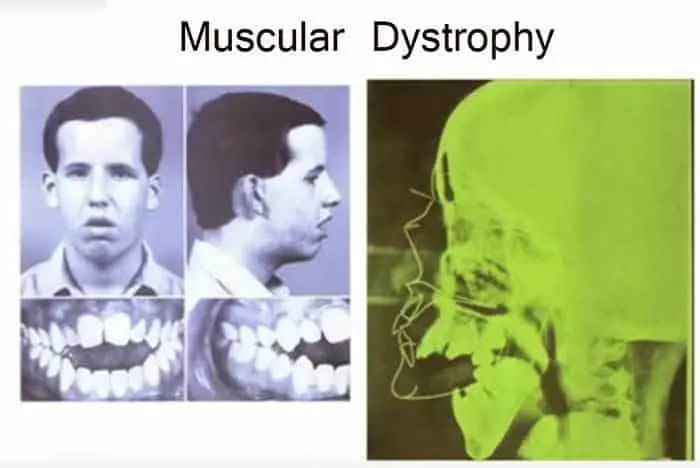
This kid was unwittingly allergic to hamsters and made the mistake of getting one. Over time, this caused him to mouth-breathe and transition more slowly to the typical mouth-breather face: 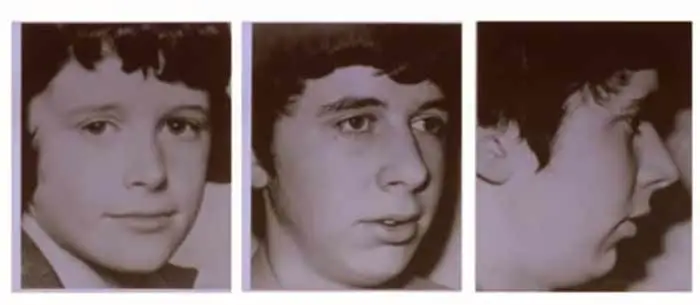
So where does mewing fit in? Well, basically, mewing is simply proper tongue posture and body posture. This is something that humans have lost as we went from a nomadic outdoor lifestyle to living in houses. Allergens such as dust mites have impaired our abilities to breathe through our nose at an early age. Also, the poor posture that’s common in today’s society, exacerbates poor tongue posture. Slouching your head forward to look at a phone or computer causes your mouth to hang open. So, you need to do the opposite.
The technique itself is simple:
- Straighten your back, stop hunching and straighten your neck.
- Close your lips. This will create a seal and prevents mouth breathing.
- Have your teeth touching. Don’t quite clench your teeth, but make sure your lower jaw is supporting your maxilla.
- Then, rest your tongue on the roof of your mouth, not just the tip of the tongue. Press your entire tongue on the roof of your mouth. Cover as much surface area of your upper palate as you can. Focus on the back, by your wisdom teeth. Since the roof of the mouth is curved, you won’t be able to get it completely flat. So just contour your tongue to cover as much surface area of the roof of your mouth as you can. Again, focus on making sure the back third of your tongue is on the roof of your mouth.
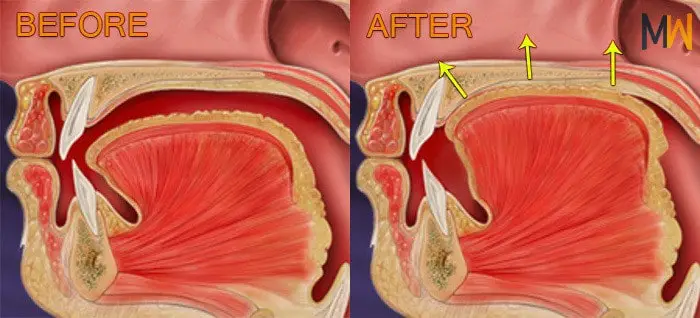
- Contract your muscles under your chin to help force your tongue onto the roof of your mouth.
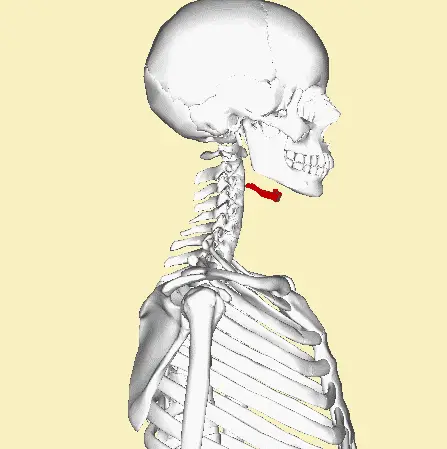
- Hold this posture for as long of a duration as you can. Remind yourself to do it constantly throughout the day. Keep your mouth closed and breathe through your nose the entire time.
As you push up on the roof of your mouth and have your teeth touching, this creates a constant force that pushes up on your cheekbones

The masseters and hyoid muscles are the antagonist muscles of the tongue. They push the rest of your face forward and improve the gonial angle of your jaw.
For more information on mewing and tips for doing it right, see our guide.
So what kind of results can you expect? Here are two people that have attained cheek hollows through consistent dedication to mewing:
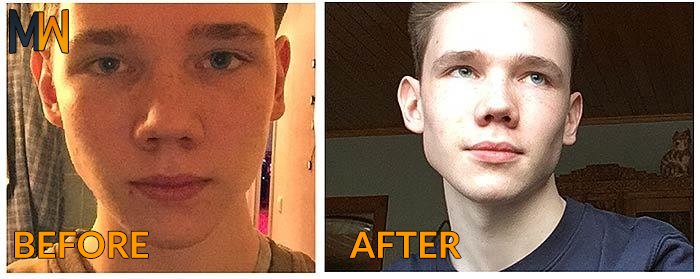
Source: lookism.net
Time: 1 Year

Source: YouTuber AstroSky
Time: 6 years
Chewing
Chewing hard foods is one of the most important keys to proper craniofacial development. The forces exerted by chewing keep the maxilla from dropping. This is the force that pushes directly up on the cheekbones. If you want cheekbones, you have to mew. Or, if you just don’t want your cheekbones to diminish with age, you should still mew.
Look at how worn down the teeth of our ancestors are:
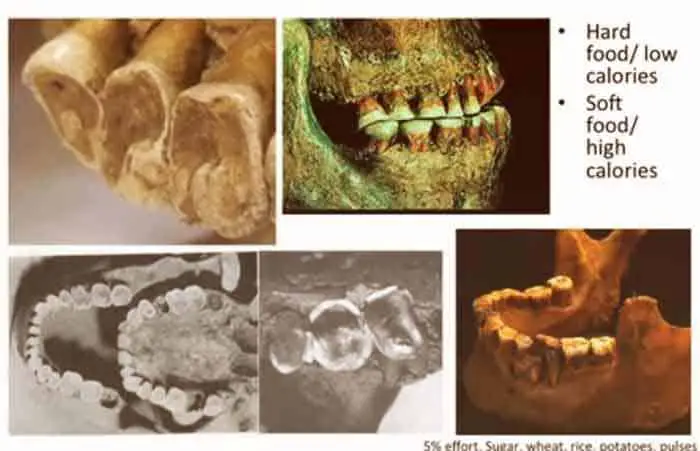
Our modern diets with soft carbs don’t require our teeth to work at all. Modern humans just don’t have to work for their calories. But this is screwing us over because it’s leading to craniofacial dystrophy and us not achieving our genetic potential.
Realize that the masseter (chewing muscle) is the strongest muscle in the body in terms of volume. The world record for the strongest bite force is 975 lbs.
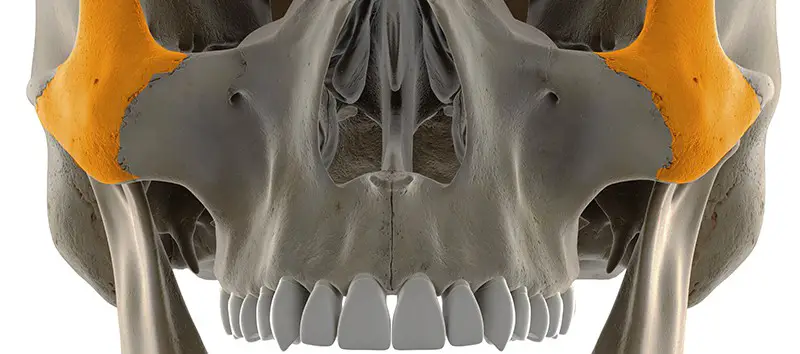
With that in mind, look at the relationship between the teeth and zygomatic bones (in orange). Imagine how much force moves upward into the cheekbones during the kind of chewing that can wear down our teeth and generate 900 lbs. of bite force. The width of the cheekbones would be extraordinary, and this would create the cheek hollow that we all strive to achieve.
Proper Swallowing
Proper swallowing is an important part of attaining cheek hollows. It atrophies the muscle that sits exactly on the area that we want to be hollowed out:

This is the buccinator muscle. If you want hollow cheeks, you must become mindful of how you swallow. First, let me explain improper swallowing. Swooshing food around in your mouth with your cheeks is the first mistake. The second mistake is sucking the food in, instead of using your tongue. Most people have never transitioned from an infantile swallow to an adult swallow, which is why this muscle is enlarged on many people.
Instead, you must chew your food up and down in a vertical direction using your masseter muscles. Then, roll the food into a ball using your tongue and only your tongue. Then, slide the ball into your esophagus with your tongue. Think of the worm dance. But do that with your tongue instead of your whole body.
When in doubt, just notice the muscle in the picture above and making a conscious decision not to use it.
Over time, this will atrophy the buccinator muscle and hollow your face out. But have realistic expectations and realize that the buccinator muscle isn’t that big in most people. This will help. But the effect might be minuscule. And since muscle atrophy isn’t a fast process, you might not even notice that this is doing anything.
Buccal Fat Reduction
Buccal fat reduction is a surgery to get rid of the buccal fat pad layer in adults.

As you can see, this lies right over the buccal area that we want to diminish. Basically, the way this surgery works is they first make an incision inside your mouth. This means there are no visible outside scars from this surgery. Then, they cut their way into deep fat tissue. The surgeon then extracts as much buccal fat as is needed and stitches the patient back up.
One critique of this surgery is that since the buccal fat pad diminishes as we age, you’re going to look unnaturally gaunt when you’re 60. But really…that’s kind of the point of the surgery. Most surgeons are experienced enough to know that you need to keep some of that fat and will be conservative in how much they take out. But even if that critique holds up, the question then becomes: would you rather look good in your 20s and 30s? Or your 60s?
Fillers
If you haven’t heard of fillers, it is a type of gel that can be injected deep into the facial tissue. The beautiful thing about them is that they are made of a substance that our body produces naturally as well (hyaluronic acid). If you get a result you don’t like, the filler can also be easily dissolved, unlike with plastic surgery.
A canula (think of an IV) is inserted into your face and pumped with this filler. It stings a little bit, but it’s not bad when you consider the fact that you’re not getting plastic surgery.
Fillers can fill out defects, or augment certain features.
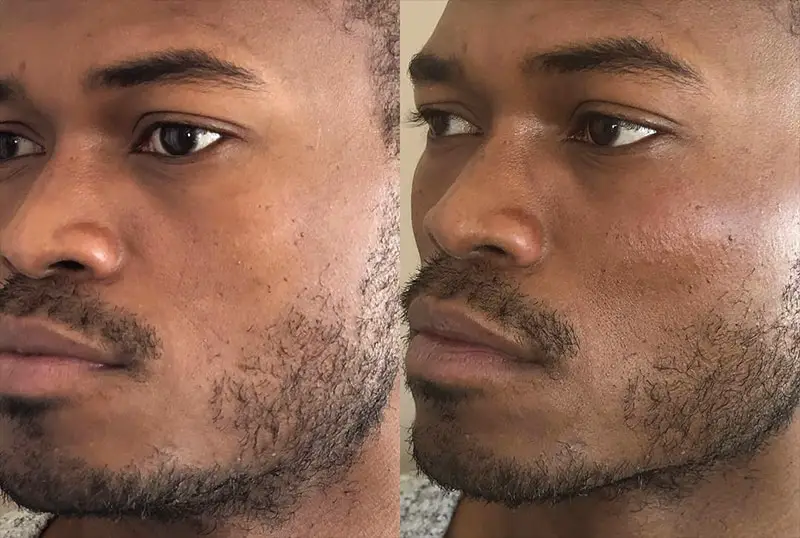
In the above picture, the injector did a good job of adding mass to the existing bone, and the patient has gained more pronounced cheekbones. That’s what you want, especially as a male.
You want an injector that knows the differences between male and female facial structure. With women, the goal is to restore a youthful appearance by filling in missing cheek mass. With males, this can be our goal as well, but our main goal is to augment the zygomatic bone.
But this can be challenging with fillers because they’re inherently a soft substance. They’re not ideal for augmentation or making hard edges.
Implants
Implants are great because they can create the hard edges that you need for cheekbone augmentation. Plus, they’re permanent.
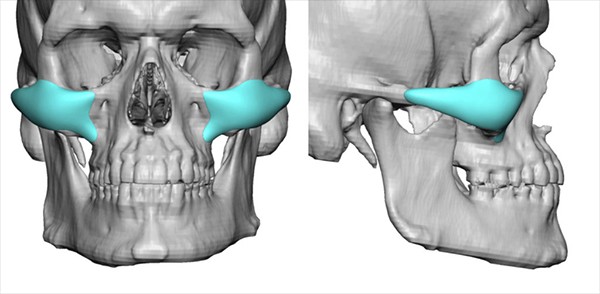
Custom CT printed implants can be made for you, and your post-surgical appearance can even be visualized in a 3d modeling program (to some extent). To put in cheekbone implants, the surgeon will make an incision behind your eyelid, which prevents the appearance of a visible scar. The surgeon then puts the implant in, and it gradually fuses into your bone over time. The implant is resistant to trauma and will be indistinguishable from bone.


